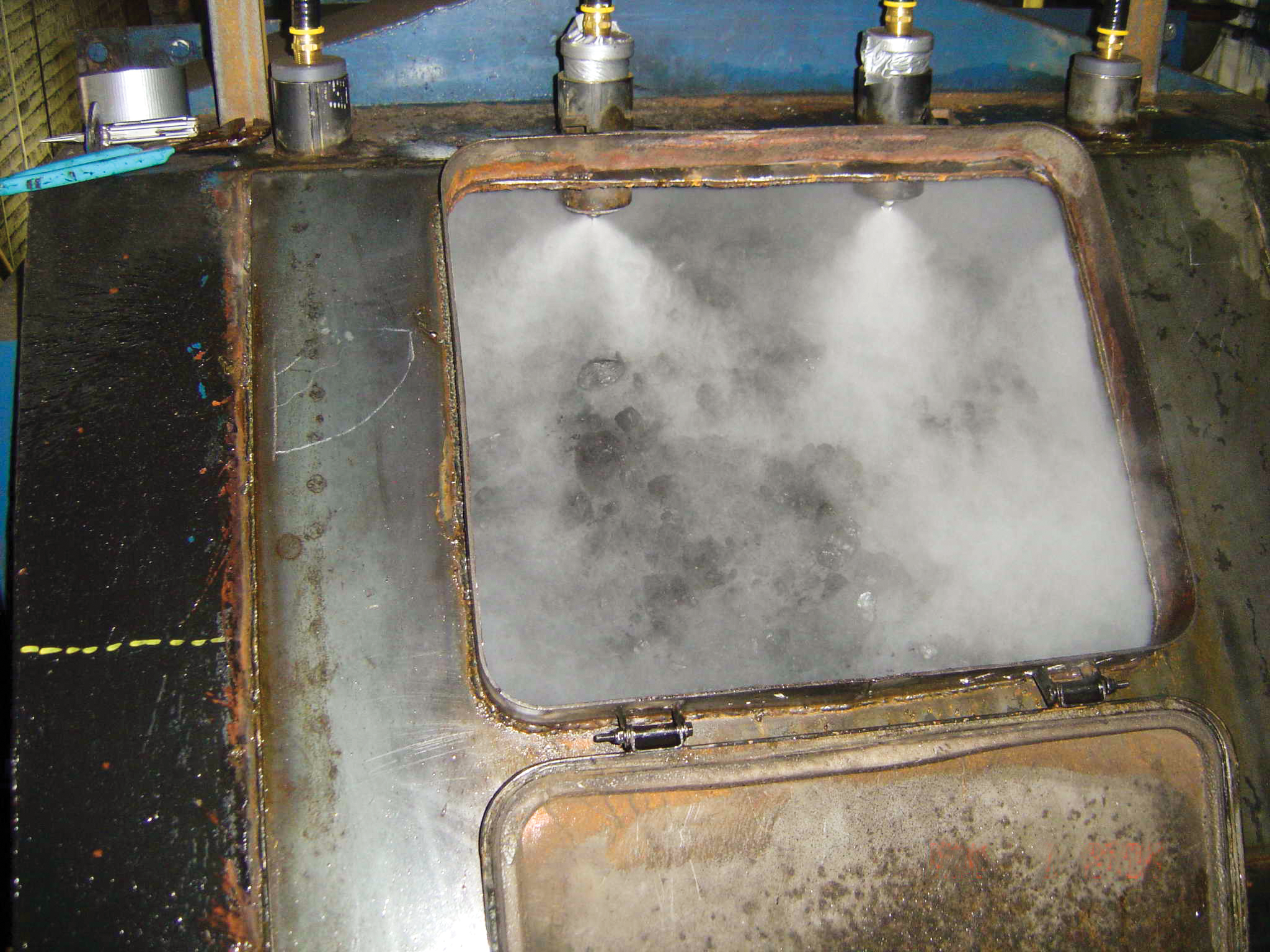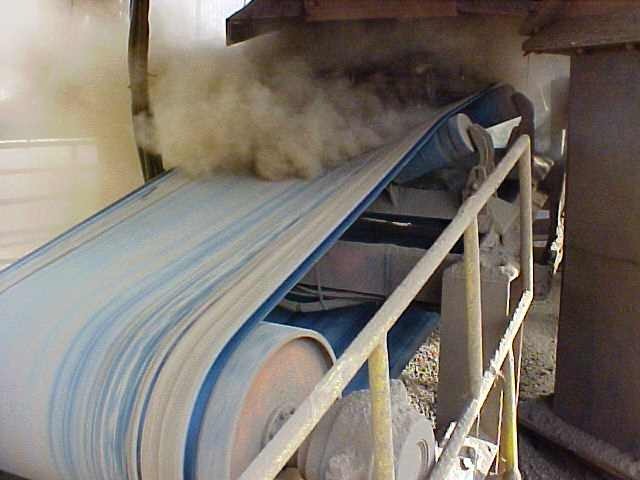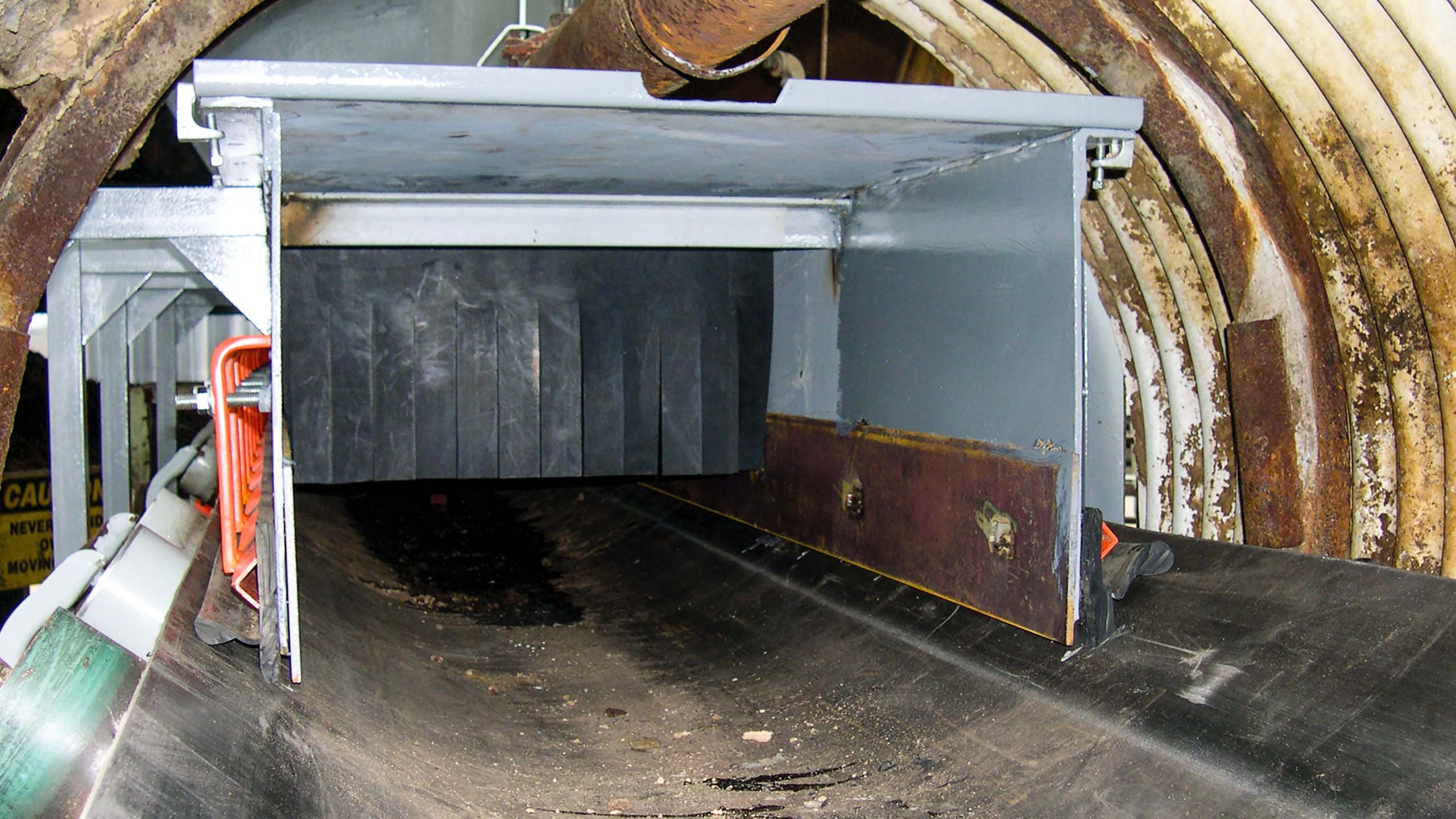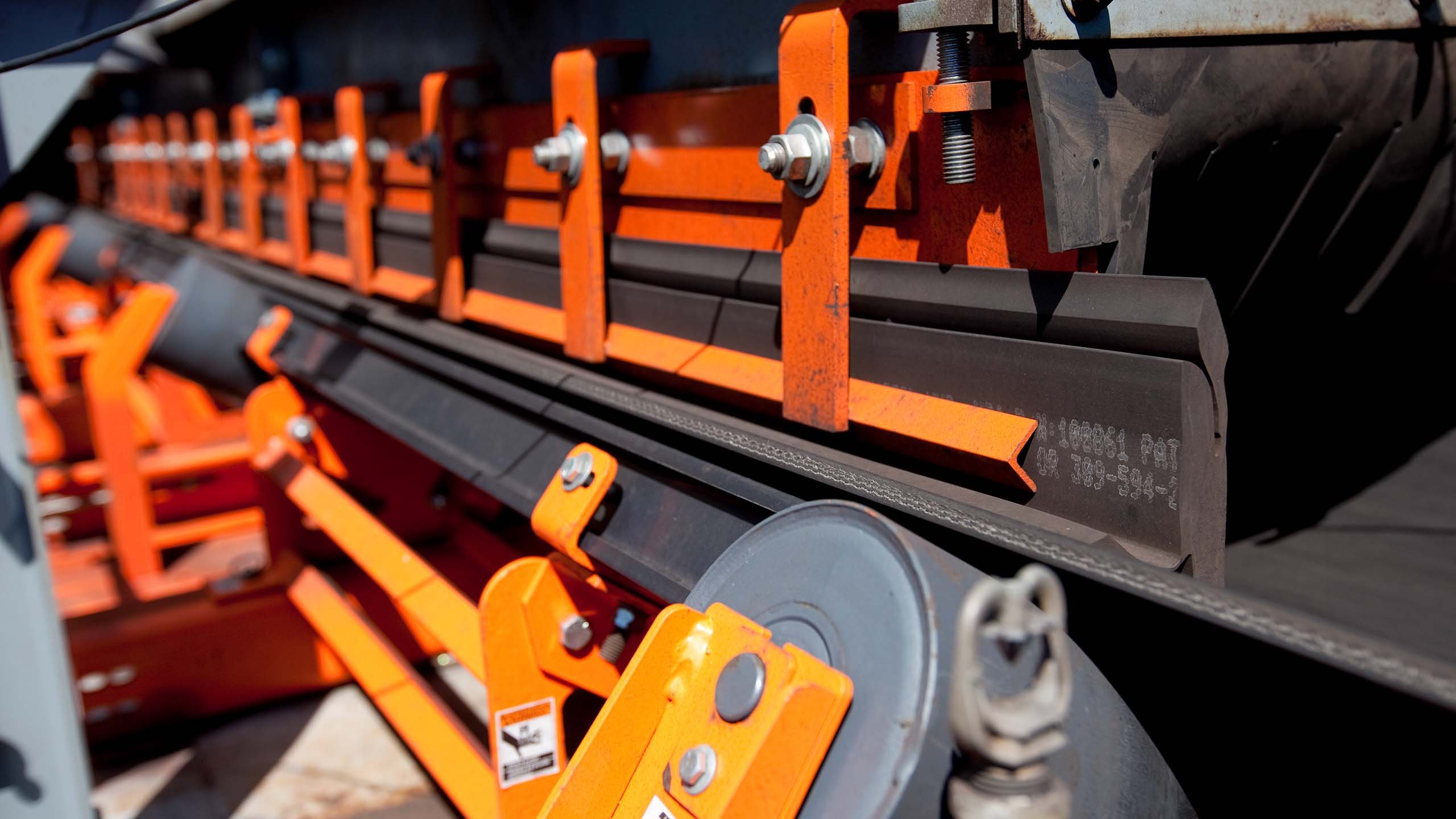Fog Suppression Systems
The use of a water fog for dust suppression is one method to optimize the application of water to dusty materials. These systems use special nozzles to produce extremely small water droplets in a "cloud," or dispersed mist. These droplets mix and agglomerate with dust particles of similar size, with the resulting combined and heavier particles falling back to the material body. Fog systems are based on the knowledge that a wet suppression system’s water droplets must be kept within a specific size to effectively control dust. If water droplets are too large, smaller dust particles typically just "slipstream" around them, pushed aside by the air around the droplets.

Fog systems supply ultra-fine droplets that maximize the capture potential of the water while minimizing the amount of water added to the product. Atomization reduces the surface tension of the water droplets, while increasing the number of droplets in a given area.
Fog systems generally add low levels of moisture to the material, typically in the range of 0.1 to 0.05 percent (1/10th to 1/20th of 1 percent) by weight of the material. These amounts, typically less than 0.5 liter per ton (1 pint per short ton), will minimize any degradation of the material.
There are two methods of producing a water fog:
A. Two-fluid atomization
One method produces fog from water and compressed air by passing them together through a two-fluid nozzle. Here the external air supply is the vehicle that fractures the water into the droplet mist used to capture the dust.
The supply of compressed air provides an additional expense for the installation and operation of this system. The cost of producing the compressed air must also be considered in the economics of the system. An additional concern is the consequence of injecting additional moving air into a transfer point’s dust control equation, which can further stimulate the movement of dust. However, this method allows the use of process water that has been simply filtered to remove any materials that might plug the nozzles.
B. Single-fluid atomization
The second system uses an ultra-fine stream of water pumped through single-fluid atomizing nozzles. It does not require compressed air or any additional power supply other than the electricity used to run its pump. It does require the use of clean, fresh water—or that the process water is filtered and treated—to reduce problems with nozzle clogging. The single-fluid nozzles use hydraulic atomization to generate the fog. In this method, a small stream of water is forced under high pressure—up to 14 megapascals (2,000 pounds per square inch), although more typically 34 to 69 megapascals (5,000 to 10,000 pounds per square inch)—through a small orifice that shatters the water droplets into microscopic particles. The energy created by the high-pressure pump is used to atomize the water droplets, rather than increase the water’s velocity, thereby minimizing displaced air. By eliminating compressed air requirements, the single-fluid nozzles simplify installation and reduce operating costs. To keep the small orifices clear, suspended materials must be removed from the water, and the pH of the water must be controlled. The low volume of water applied makes this relatively easy to accomplish with filtration and ionization.
See Also: Fog Suppression to Control Belt Conveyor Dust Part 2.




















Leave Comment